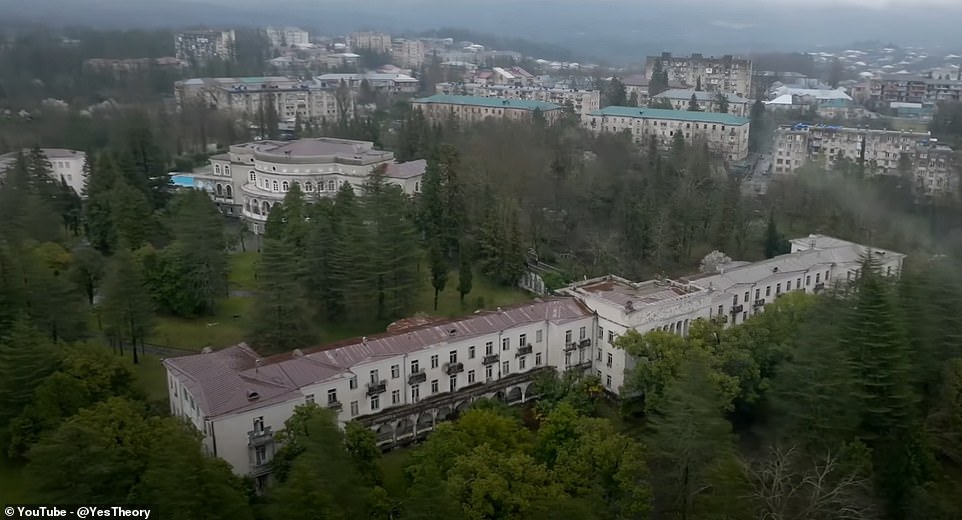Ruined buildings, lavish architecture, empty bathrooms and the occasional elderly resident wandering around – this is what a sprawling spa once loved by Joseph Stalin looks like now.
The team behind the Yes Theory YouTube channel ventured to Tskaltubo, in west-central Georgia, to explore what the once-booming vacation spot looks like after its abandonment in the 1990s.
They begin by meeting a young man named Lucas who grew up very close to the ruined city and reveals that many of the grand buildings were built by German prisoners of war who were captured by the Soviet Union during World War II.
Once the town of Tskaltubo was established, it served as a spa town with a variety of therapeutic treatments on offer.
During Soviet rule, which lasted from 1936 to 1991, Georgians were only allowed two vacations a year and were sent to state-sponsored resorts, Tskaltubo being one of them.
The team behind the Yes Theory YouTube channel ventured to Tskaltubo, in west-central Georgia, to explore what the once-booming vacation spot looks like after its abandonment in the 1990s.
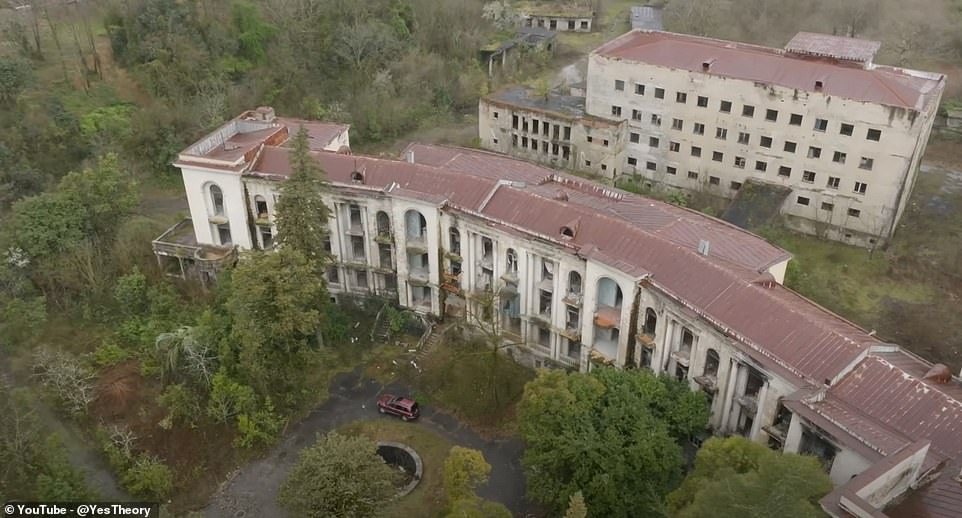
Many of the grand buildings were built by German prisoners of war captured by the Soviet Union during World War II.
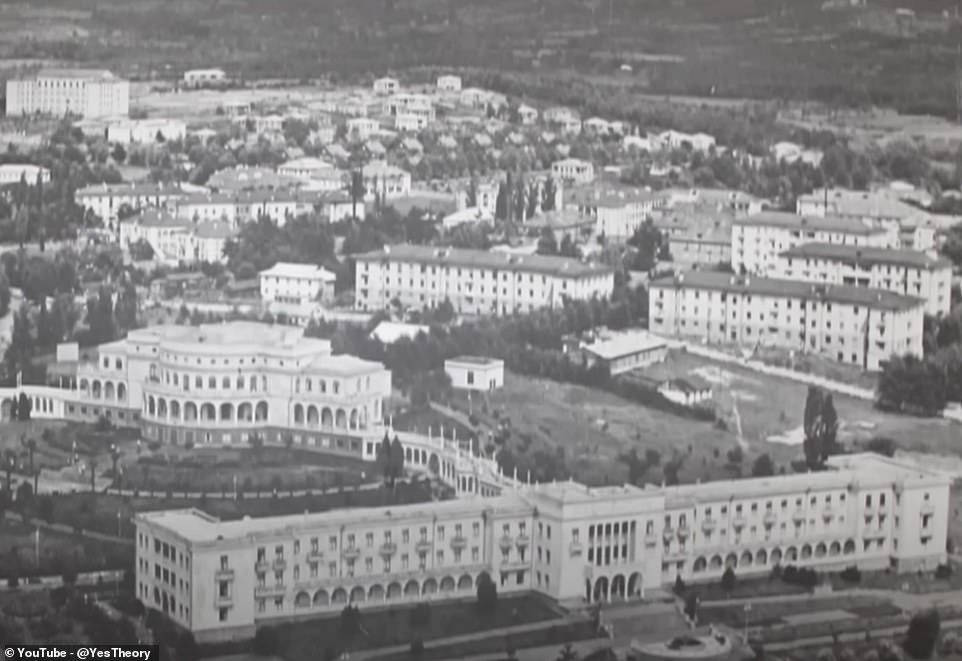
Once the town of Tskaltubo was established, it served as a spa town with a variety of therapeutic treatments on offer.
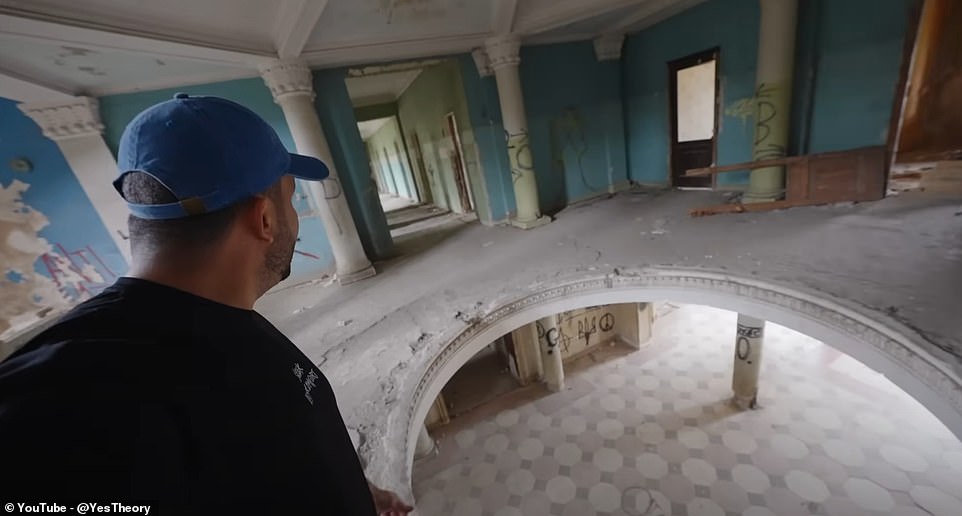
During Soviet rule, which lasted from 1936 to 1991, Georgians were only allowed two vacations a year and were sent to state-sponsored resorts, Tskaltubo being one of them.
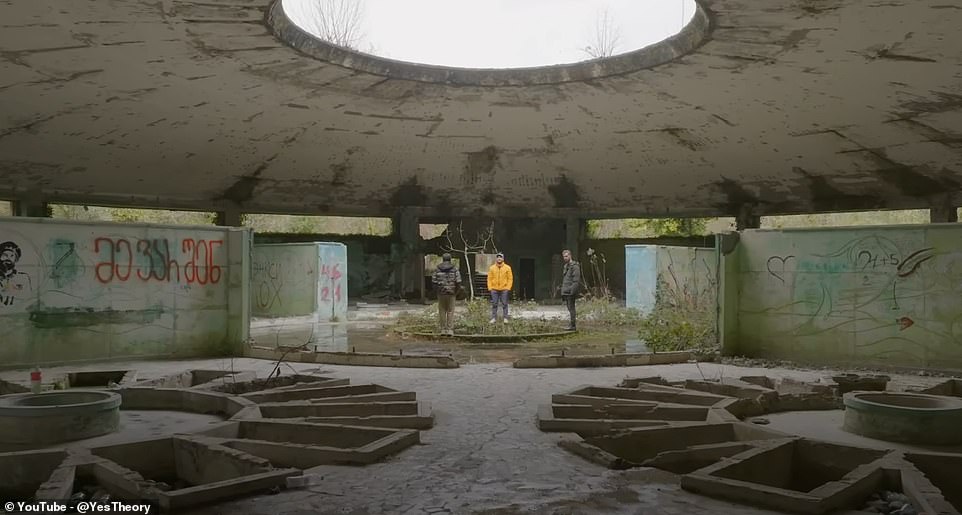
More than 120,000 visitors came to the city’s spas and thermal baths each year.
Lucas explains in the video that his grandmother worked in the city when it was in full swing, and more than 120,000 visitors visited its spas and baths each year.
Old footage shown in the documentary shows tourists enjoying the pleasant surroundings of the resort town and bathing in the mineral-rich spring waters.
However, since Lucas was born in 2000, he said he never saw Tskaltubo in its heyday and instead explored the abandoned buildings with friends.
As the film crew wanders around the sprawling site, they comment on how eerie it feels.
In one scene, they enter a building, which appears completely preserved.
One of the team members says: “It feels very haunted when a place hasn’t moved in decades.
“The bed is still made and the lamps are still in the same position as before.”
Elsewhere in the documentary, the YouTube creators enter a bathhouse built specifically for Stalin.
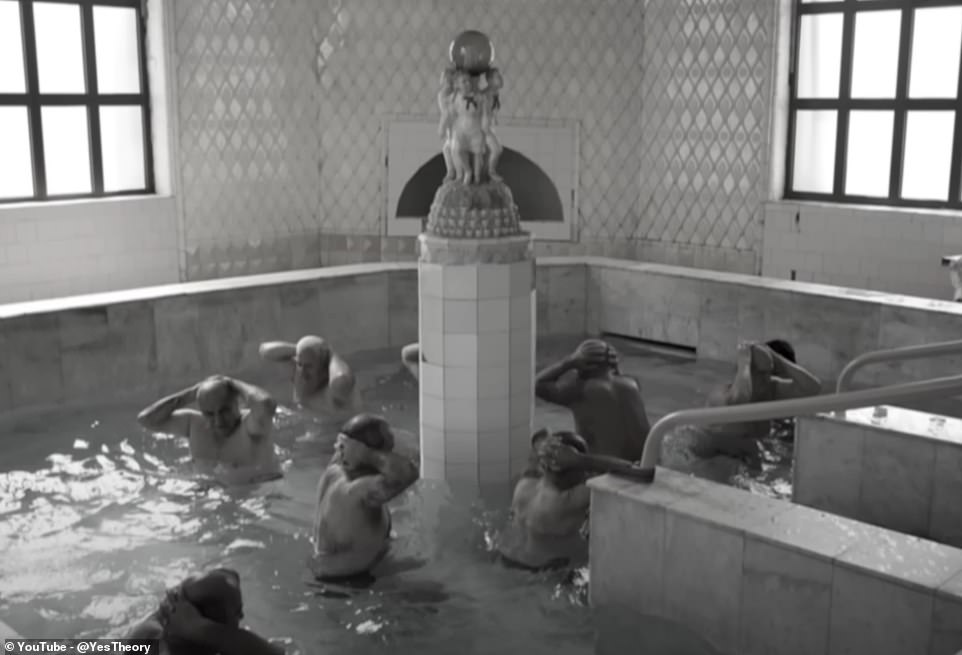
Old footage shown in the documentary shows tourists enjoying the pleasant surroundings of the resort town and bathing in the mineral-rich spring waters.
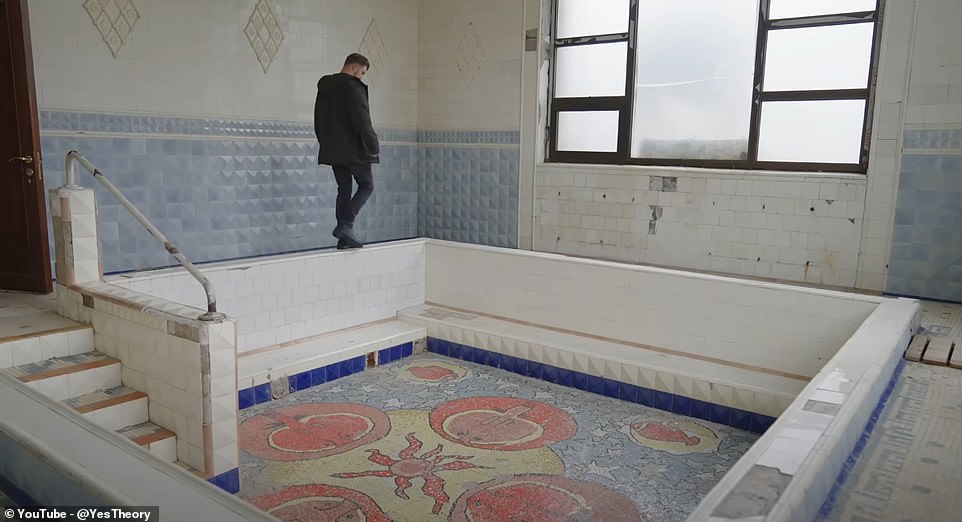
A private bathroom built for Stalin, which he only used once before his death in 1953.
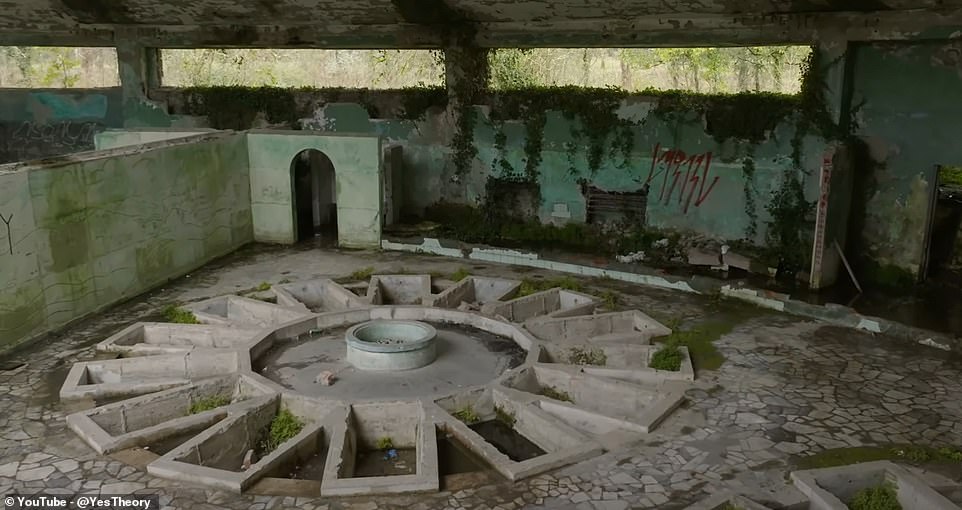
As the film crew wanders around the sprawling site, they comment on how eerie it feels.
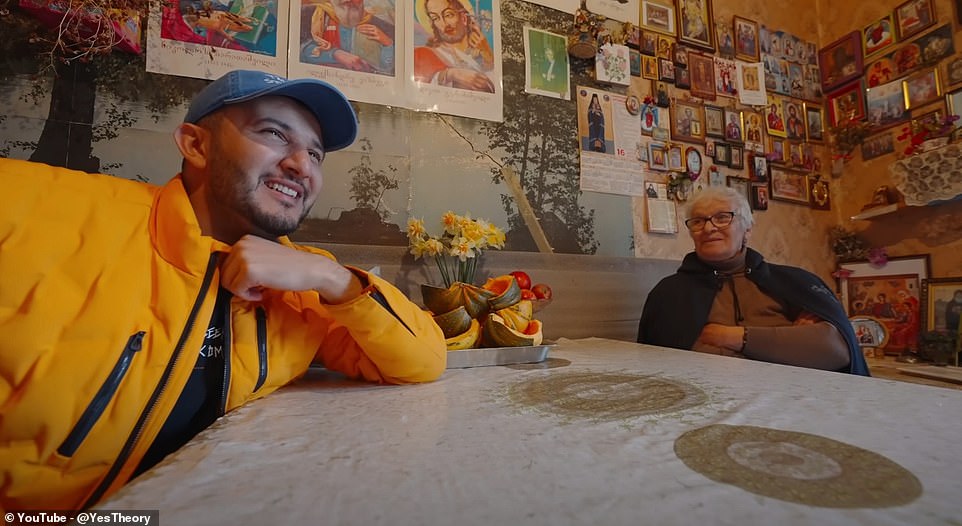
Delving deeper inside Tskaltubo, the Yes Theory team meets a woman who has been living in the abandoned city for 33 years. She explains that she ended up there after being displaced by the war in the Abkhazia region.
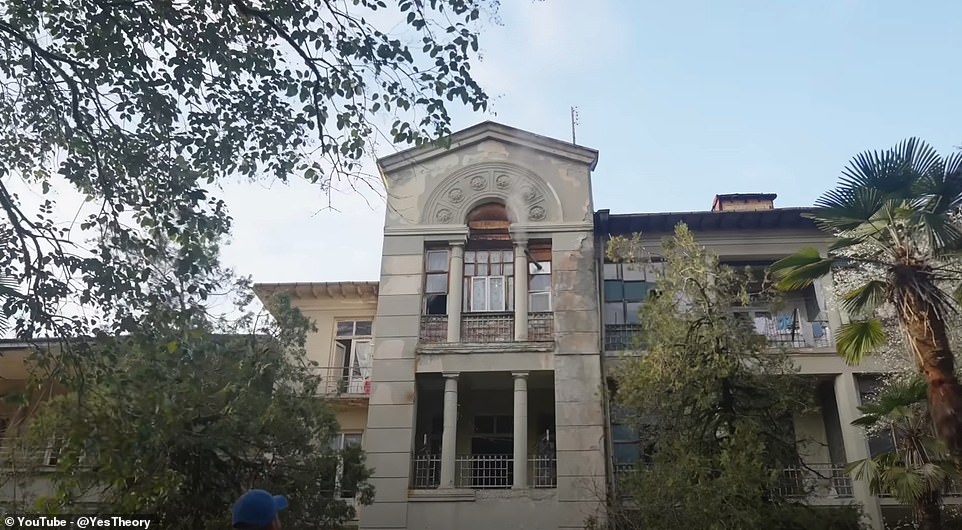
The only signs of life visible from outside her apartment are steam rising from a vent and clothes hanging from a balcony.
This is one of several buildings in Tskaltubo that are still in use, including a spa hotel where the Yes Theory team stays.
Upon entering the bathhouse, Lucas explains that 4,000 extra workers were hired to build it because “they had a deadline for Stalin to come here.”
The building included a private bathroom for the murderous dictator, which he only used once before his death in 1953, and as they look into the mosaic-covered room, one of the film crew says it makes him feel “a little disgusted.” .
Delving deeper inside Tskaltubo, the Yes Theory team meets a woman who has been living in the abandoned city for 33 years.
The only signs of life in her apartment from the outside are steam rising from a vent and clothes hanging from a balcony.
She explains that she ended up there after being displaced due to the war in the Abkhazia region where she was from.
Her husband was shot and she fled alone to Tskaltubo.
The filmmakers reveal that after the spa resorts closed, the buildings were used to rehouse internally displaced people from war-torn areas.
The lady reveals that she never intended to be in Tskaltubo for so long and that she still dreams of returning home one day.
After spending a couple of days exploring the ghost town, the Yes Theory team considers it a memorable experience.
They conclude: ‘Because we came with a very limited understanding of the history of this country, we were able to slightly open that door to the past through this semi-abandoned Soviet city and paint a clearer picture of what those difficult times were like for Georgia.
“We believe that studying our past is imperative to not repeat the same mistakes tomorrow and so we hope that we, as the next generation, will listen to these stories and choose more wisely a future of peace once and for all.”

